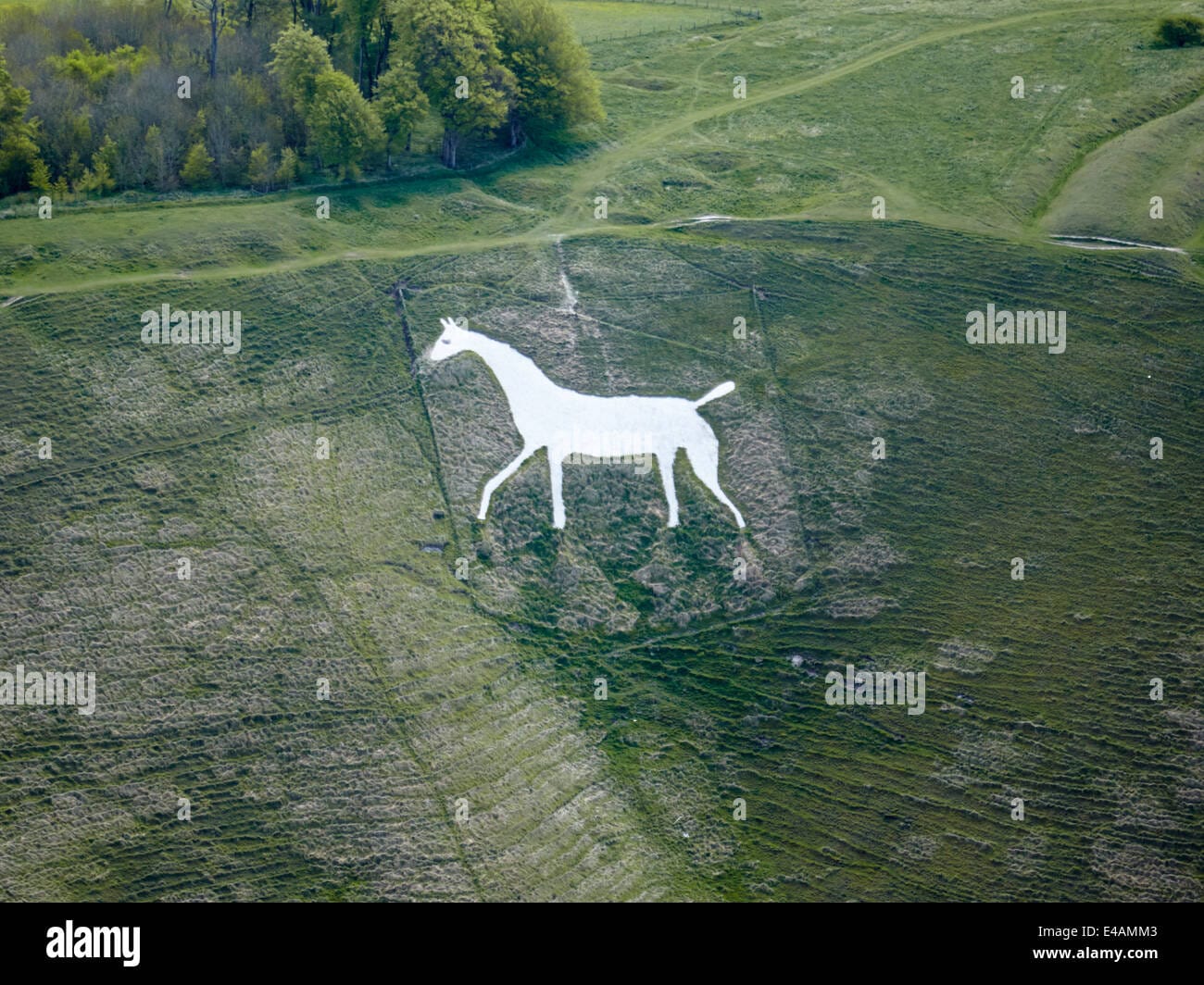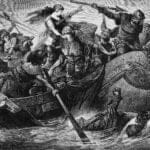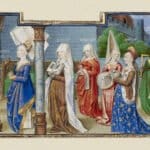The Cherhill White Horse, a colossal chalk figure etched into the hillside of Cherhill Down in Wiltshire, England, stands as a captivating testament to British artistry and community spirit. This article delves into its rich history, its ongoing preservation, and the unique experiences it offers visitors. We’ll explore its mysterious origins, its place among other famous white horses, and the breathtaking views it commands.
Unveiling the “Mad Doctor’s” Masterpiece
The Cherhill White Horse, officially unveiled in 1780, is a relatively young member of the family of British hill figures, coming in third after Uffington and Westbury. Its creation is attributed to Dr. Christopher Alsop, a physician from nearby Calne, earning him the moniker “the mad doctor.” The precise reasons behind this ambitious undertaking remain shrouded in mystery, although some experts suggest inspiration from the renowned horse paintings of George Stubbs. The scale of the project— originally about 165 feet by 220 feet—was immense, demanding meticulous effort and significant community involvement in its realization. Further research may uncover greater details around the motivations behind its creation and the logistical challenges overcome during its construction. Many aspects surrounding its design and creation remain open to interpretation and ongoing research may shed further light on these areas.
A Hike with a View: Exploring Cherhill Down
Situated on Cherhill Down, the white horse offers an unforgettable hiking experience. Well-maintained trails weave through the picturesque Wiltshire countryside, providing stunning panoramic views. Visitors can enjoy the fresh air and breathtaking vistas, making for a memorable outing suitable for various fitness levels. It is recommended that visitors bring appropriate footwear and water, especially during warmer months.
Preserving a Legacy: Community Spirit and Ongoing Restoration
The Cherhill White Horse wouldn’t grace the Wiltshire landscape without the tireless efforts of dedicated volunteers who regularly undertake the re-chalking process. This substantial undertaking ensures the horse remains a prominent landmark. In May 2024, this community effort involved over 100 volunteers demonstrating the strong commitment to its continued existence. These community events not only preserve the horse but also create a sense of shared heritage and identity.
Wiltshire’s White Horses: A Family Portrait
The Cherhill White Horse is just one member of a larger family of hillside figures across Wiltshire and beyond. The following table offers a comparison with some of its notable relatives:
| White Horse | Approximate Age | Approximate Size | Location | Special Features |
|---|---|---|---|---|
| Uffington | 3000+ years | Largest | Uffington Hill | The oldest, with incredibly detailed carvings. |
| Westbury | 1000+ years | Medium | Westbury Hill | Very well-preserved, with clear and sharp lines. |
| Cherhill | 244 years | Medium | Cherhill Down | Third oldest, linked to the story of the “mad doctor.” |
Planning Your Trip: A Visit to the Horse
The Cherhill White Horse is readily accessible by car, conveniently located near the A4 road with ample parking. However, it’s advisable to check access options beforehand. For optimal photographic opportunities, sunrise and sunset offer the best lighting conditions to capture the horse’s magnificence.
Beyond the Horse: Exploring the Cherhill Area
A visit to the Cherhill White Horse is just the beginning of a wider exploration of the region’s rich heritage. Nearby attractions include the imposing Lansdowne Monument and the intriguing ruins of Oldbury Castle, offering further insights into Wiltshire’s captivating history. The charming town of Calne is also within easy reach and provides additional opportunities for exploration and dining. Visitors could readily spend a full day exploring this beautiful area.
The Enduring Symbolism of Wiltshire’s White Horses
The meaning and significance of Wiltshire’s white horses continue to be debated amongst experts. Some theories suggest connections to ancient symbols, possibly dating back to the Bronze Age, while others propose links to land ownership or purely artistic expression. The lack of definitive answers allows for ongoing interpretation and discussion, making them a perpetual source of fascination and inquiry. Some scholars may suggest links to ancient tribal markings or territorial claims, while others might focus on the purely artistic motivations of the creators as a form of self-expression or a reflection of beliefs in the locality at the time of creation. Ongoing research continues to uncover more information, and further interpretations may emerge through more comprehensive analysis of historical accounts and archaeological discoveries.
The Cherhill White Horse’s Ongoing Story
The Cherhill White Horse isn’t merely a static piece of history; it’s a living legacy, shaped by ongoing efforts to preserve it for future generations. The communal spirit behind its maintenance speaks volumes about the enduring connection between people and their shared heritage. It is a dynamic landmark, constantly evolving through the acts of preservation, and its story is still being written. Future research may uncover further layers of meaning and understanding of this fascinating and impactful symbol.
Rarity in White Horses: A Complex Question
Defining the “rarest white horse” is challenging. The term “rarity” is not solely about the total population of a specific breed but also the prevalence of a particular coat color within that breed. Genetic factors play a crucial role, with various genes contributing to different white coat patterns. Some patterns, like “lethal white syndrome,” are associated with health problems, creating further complexities. The Cherhill White Horse, as a chalk figure, doesn’t fit this definition, its rarity lies in its status as a unique piece of historical art and not the coat color of an actual horse.
The Genetics of White Coats
Several genetic factors determine a horse’s coat color. Dominant white, for instance, results from distinct genes and while often associated with no health issues; other patterns like frame overo can carry severe risks such as lethal white syndrome. The frequency of these patterns varies widely across different horse breeds, making pinpointing the “rarest” white horse difficult. There is some ongoing research into the underlying genetic mechanisms of white coats, and it is likely that more will be understood in due course. It’s important therefore to approach statements about absolute rarity with necessary caution. We are still gaining a deeper understanding and more nuance may be added.
Breed-Specific Rarity
Rarity is best understood on a breed-by-breed basis. A white horse in a predominantly black breed like the Friesian is far rarer than in a breed where white is more common. While exact numbers are often hard to pin down, comparing the proportion of white horses within a breed provides a more accurate measure of rarity. It is likely that future research will generate more accurate and comprehensive data on the rarity of different white coat patterns across many different breeds, and this will allow for a more nuanced understanding.
The Cherhill White Horse: A Unique Form of Rarity
The Cherhill White Horse holds a unique position. Its rarity stems not from genetics but from its age, historical importance, and unique position within the landscape. As a piece of land art, its value and significance are not comparable to the rarity of a specific horse coat color and must be considered separately..
- Unlock Elemental 2 Secrets: Actionable Insights Now - April 2, 2025
- Lot’s Wife’s Name: Unveiling the Mystery of Sodom’s Fall - April 2, 2025
- Photocell Sensors: A Complete Guide for Selection and Implementation - April 2, 2025
















